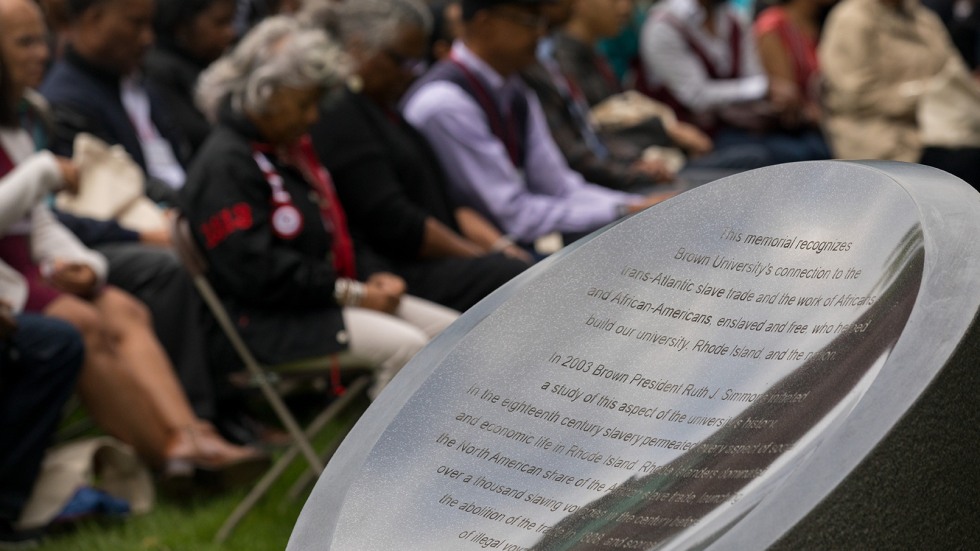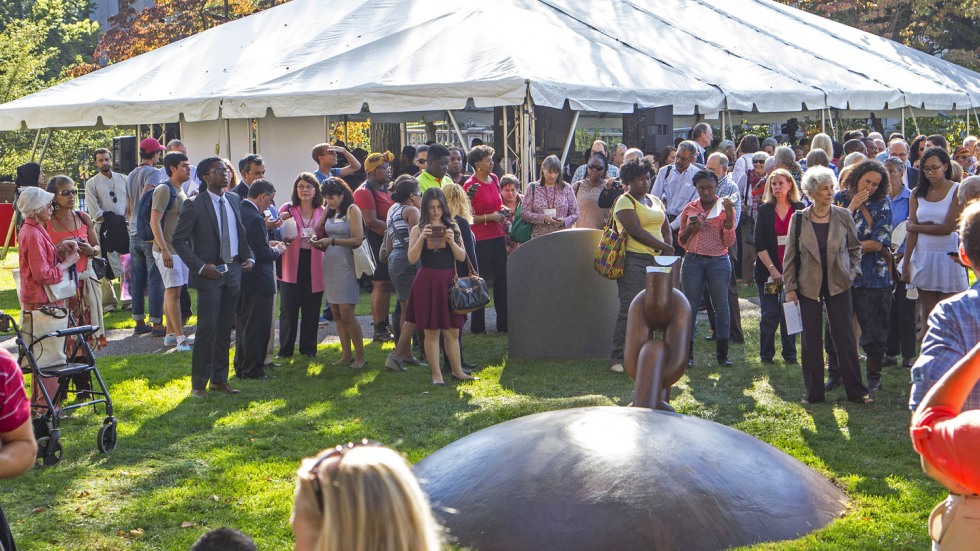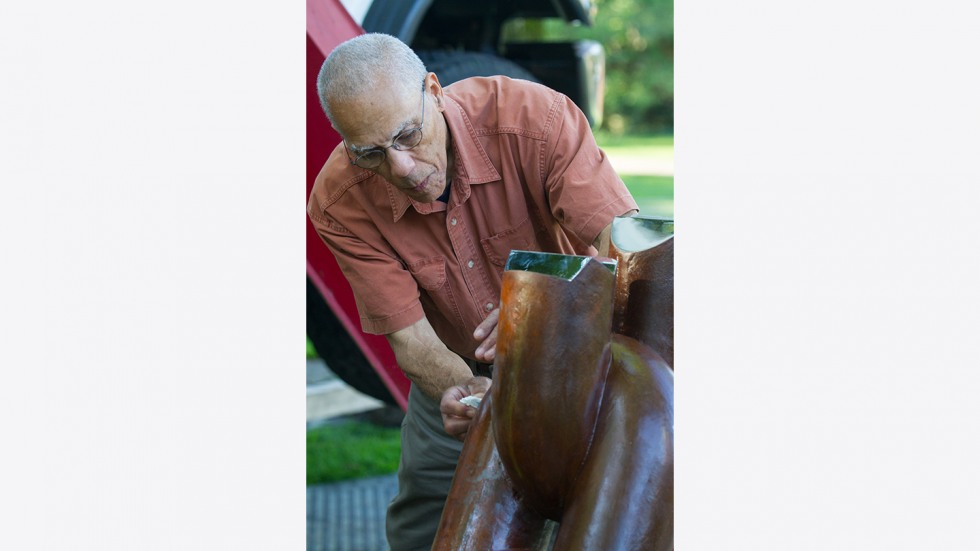Slavery Memorial
The reason this memorial is in such a prominent spot on our campus is that we know a polite remembrance is not enough. We have an obligation, here at this citadel of free speech, to set a higher standard. We need to commit fully to the act of remembrance.

Located on the Front Green, the Slavery Memorial recognizes Brown University’s connection to the trans-Atlantic slave trade and the work of Africans and African-Americans, enslaved and free, who helped build our university, Rhode Island, and the nation. The inscription on its stone plinth reads, in part: "This memorial recognizes Brown University’s connection to the trans-Atlantic slave trade and the work of Africans and African Americans, enslaved and free, who helped build our university, Rhode Island and the nation." Credit: Nick Dentamaro

Slavery, sculptor Martin Puryear told the audience, was an industrial reality, a way of creating and measuring wealth. “I hope that I have created an industrial artifact ... that will never, ever disappear from memory.” Photo: Mike Cohea/Brown University

Martin Puryear at the installation in August 2014: “The most important takeaway from this whole enterprise is historic truth.”
The Slavery Memorial, commissioned after the release of the Slavery and Justice Report and dedicated in 2014, is a tangible recognition of Brown’s, and the rest of Rhode Island’s, connections to the transatlantic slave trade. It sits at the center of the Front Green, also known as the Quiet Green, in the heart of the Brown campus.
In 2009, after the Steering Committee called on the University to create a permanent memorial recognizing the University’s and state’s historical ties to the slave trade, the University formed a commission of Brown, Providence and Rhode Island leaders to establish a theme and search for an artist. Commission members engaged sculptor and National Medal of Arts recipient Martin Puryear.
Following the Steering Committee’s original charge to create “a living site of memory, inviting reflection and fresh discovery without provoking paralysis or shame,” Puryear designed an iron ball and broken chain, symbolizing a move toward infinite freedom even as the weight of history remains half-buried. An inscription on an adjacent stone plinth describes the context and background behind the piece.
Learn more about the memorial
Brown’s Public Art website provides more information about the sculpture’s materials, dimensions and history.